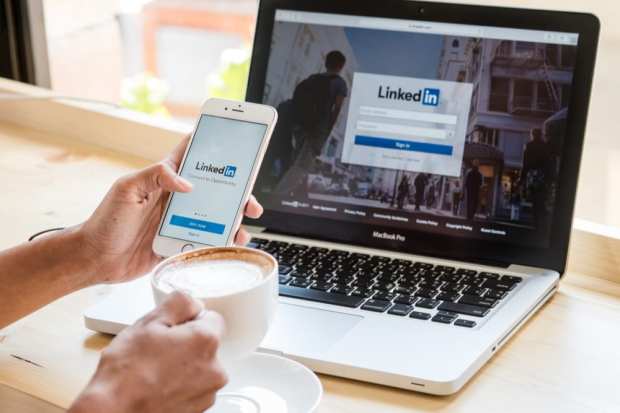LinkedIn On Building The New Digital Corporate Commons

With a little over 675 million worldwide users, LinkedIn was a household name long before the coronavirus cut an incredibly wide trench through the global economy in general, and the world of working in particular.
The social media service for professionals was already the established, favored digital hub for professional networking, job hunting, talent scouting and corporate content.
In the last few weeks, however, LinkedIn has rapidly discovered that it is time to do more and scale out its services because the needs the company is serving have expanded incredibly, Kiran Prasad, vice president and head of consumer products, told Karen Webster in a conversation about the service’s changing role in workers’ lives.
The world of work has been dramatically transformed in the last few weeks — and in ways not entirely captured by the headlines.
For example, Prasad noted, in some sections of the professional world, demand has crashed and burned due to the full-scale economic slowdown brought on by COVID-19. Currently, over 12 million Americans have already lost their jobs, according to the Department of Labor, and those figures are almost certainly going to continue to increase. But, he said, at the same time that is happening, LinkedIn’s in-house data is showing demand spiking in other parts of the market.
“I think what we’re seeing is there are some industries that are really, really growing fast like shipping, food production, healthcare, grocery store associates, warehouse managers, delivery drivers — the things that are the critical needs in this quarantine environment to be able to distribute the things that absolutely need to get out,” he noted.
Meanwhile, much of the workforce is out of office and not traveling to professional events, Prasad noted, but they’re still working, albeit from home. Those workers — and corporate leaders and managers trying to remotely lead them — have emerged in need of specialized and expanded support as well over the last several weeks, Prasad said. LinkedIn is learning how to offer that support as it works to scale up at the same speed as the growing demands on its services.
An Educational Content Hub
While informational content is not a new feature to LinkedIn, Prasad told Webster, the breadth and depth of what has gone up in the last several weeks has been quite a bit wider and more varied than what it had been previously.
As professionals of all kinds are becoming a bit more anxious about the jobs environment, LinkedIn is seeing more and more users looking to take learning courses of all kinds: how to optimize working from home; how to learn elementary skills in a new possible professional area; and how to begin a new job search.
“We’ve actually taken about 30 of the LinkedIn learning courses that are typically behind a paywall and made them free,” Prasad said. “We’ve also created a couple learning paths … a series of courses users can take in order to sort of accomplish something specific. For example, one is for a teacher trying to run a class from home answering the all-important question about how they actually do that.”
And users themselves, he noted, are spinning up more content as LinkedIn is forging new ground in the largely unexplored territory of live events simply because there has become such a massive need of late. LinkedIn Live, he noted, has had a major ramp-up as more users are looking to build digital events on the platform. That is an invite-only program, so the company can make sure what is going up meets community standards and isn’t creating a free-for-all of content. LinkedIn wants what goes up to be genuinely valuable.
What the company is seeing largely is that a lot of users are thinking about doing something different at the end of this crisis than whatever they were doing before.
“There are people in the food service industry who are saying right now, ‘Maybe this is my opportunity to switch to the career that I’ve always wanted. And I’m furloughed, and I’m at home, and I have hours to be at home — let me watch the learning videos and start to effectively up-skill,’” Prasad said, noting that LinkedIn hopes to offer the chance for workers to make a change via its Live events and more robust learning tools.
It’s also important to keep the community aspect of work alive, even when going to work is temporarily on hold, he said.
Creating Conversations
While there are things about going to work that everyone grouses about, there is something to be said for the direct community aspect of it, or how much people are feeling that lack in their lives as entire workforces have shifted away from being in any physical proximity to each other.
Prasad said LinkedIn has seen an increased enthusiasm to engage and encourage on its platform.
People are commenting more often on LinkedIn Posts and asking more questions. Workers who have been furloughed, he noted, have started private user groups to communicate, cheerlead, job hunt and share tips as a collective. CEOs and division heads from firms massive and small have turned to LinkedIn to create digital water cooler spaces to directly reach their workers.
“A lot of these CEOs are looking for a better way to interact directly with their employees,” Prasad noted.
Times are uncertain for everyone — and communities make those tough times easier by being shared. In the wake of a world that is socially quarantined, a lot of these communities are being rebuilt online, often in real time, one day at a time. While much of what LinkedIn learns today could perhaps be monetized someday down the line, right now that isn’t the focus.
The focus is providing the digital real estate necessary for the digital workforce to set up shop for its new and emerging set of needs.
